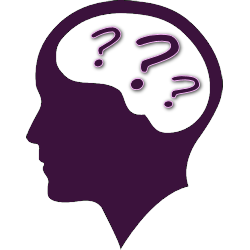Diagnosing Attention Deficit Hyperactivity Disorder (ADD/ADH
Lesson Plans > General > Learning DisabilitiesDiagnosing Attention Deficit Hyperactivity Disorder (ADD/ADH

Assessing whether a certain individual is suffering from Attention Deficit with HYPERACTIVITY DISORDER or not is far harder than it appears to laymen like ourselves. This is because, not only does its symptoms largely overlap those of hyperthyroidism etc. they are also largely exhibited by 'normal' human beings some time or the other every single day. Therefore the first important step towards diagnosing the disease is to consult a trained health care provider regarding it. Things only seem scary when we are treading over 'new ground', so to speak. Take small but deliberate steps and a positive end will begin to appear on the horizion.
Given that the defining factors of ATTENTION DEFICIT HYPERACTIVITY DISORDER is still quite musty and vague diagnosing the problem is difficult since nothing is strictly within or outside the peripheries of the disease. And although various organizations like The American Pediatrics Clinical Practice for instance, have tried to provide certain guidelines in order to recognize the disease most are still quite unsure regarding the reliability of such methods. Of course doctors have in the past tried MRI (or magnetic resonance imagery) to analyze their patient’s brains in order to detect any possible signs of ADD/ADHD, but most medical practitioners do not recommend this any more. Thus diagnosis is now primarily based on the reports of those close to the patient, who see, talk, work or live with him/her everyday and have thereby come to know the patients habits closely. A number of people suffering from ADHD also realize their problem with time, especially as they grow older and consult doctors regarding it.
The guideline provided by the American Academy of pediatrics requires medical personnel to look into the child’s behavior in more than one place before reaching a conclusion regarding whether or not the child is suffering from ADD. Thus the doctor is expected to consult various ‘witnesses’ regarding the behavior of his patient in say his school, his home, at the playground, at his Grandma’s place etc. and thereby ensure that his diagnosis is not based on the child’s behavior at a certain specific place. This is to know for sure that the problem in hand is intrinsic and is consistent everywhere and not specifically due to some factors at a particular place. The guideline also requires the physician to use an “explicit criteria for the diagnosis using the DS-IV-TR”.
When approaching a doctor for cure therefore make sure that he/she follows these directions set by the Academy closely before diagnosing the problem. Remember a problem such as ADD/ADHD might not be as difficult to cure as is to diagnose, in fact proper diagnosis might be the first step towards a satisfactory cure. One doesn't need a black cloud of doom and gloom over their or their families head. Start slow and with the professionals that you feel comfortable with. Doing something, even something small, it is still SOMETHING!
ADHD is an underestimated disease which is seen in varying degrees amongst many youngsters around us and while we may choose to ignore it and deny it’s presence it’s a plague which will follow your little one right till he shuts his eyes for good. Therefore recognize your child’s disease today and take him to a doctor for the right diagnosis and a proper cure. For more general information and a good place to start visit OLIN'S e-bookstore.

